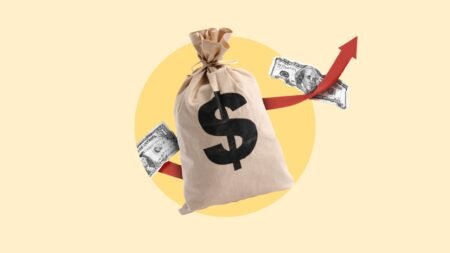Getty images, illustrated by Bankrate
Key takeaways
- A rainy day fund is money set aside for small, unexpected expenses like car repairs or medical copays, typically $500-$2,000.
- Unlike emergency funds, rainy day funds cover minor financial hiccups rather than major life changes like job loss.
- Keep your rainy day fund in a high-yield savings account for easy access alongside the ability to earn a competitive interest rate.
- According to Bankrate’s 2025 emergency savings report, 37 percent of U.S. adults needed to use their emergency savings at some point in the last 12 months.
A rainy day fund is money that’s set aside for unexpected and lower-cost expenses, like home maintenance or parking tickets. This financial cushion helps you handle minor surprises without derailing your budget or accumulating debt. Unlike an emergency fund that covers major life changes, a rainy day fund focuses on smaller financial hiccups that inevitably arise.
What’s the difference between a rainy day fund and an emergency fund?
A rainy day fund is slightly different from an emergency fund. The main differences are the size of the fund and what they’re used for. A rainy day fund covers smaller unanticipated expenses, such as buying new tires or paying to repair a home appliance. An emergency fund is reserved for unexpected events or major life changes, such as a job loss or divorce, that can have severe consequences on your finances.
Both are critical for preparing for the unexpected, especially at a time when the percentage of consumers who’d cover an emergency with their credit card rather than savings is the highest since 2014. According to Bankrate’s latest annual emergency fund report, 1 in 3 Americans have more credit card debt than emergency savings. A rainy day fund, paired with an emergency fund, can help to navigate unexpected challenges and avoid accumulating debt as a result of them.
Expenses your rainy day fund should cover
Use your rainy day fund to cover smaller expenses that could force you to open your wallet when you least expect to. These typically range from $100 to $2,000 and include:
- Medical procedures and doctor or veterinarian visits
- Vehicle maintenance and repairs, such as replacing a broken windshield
- Home repairs like fixing a broken appliance or minor plumbing issues
- School supplies and unexpected fees
- Pet emergencies and veterinary bills
- Moving costs for unexpected relocations
The key is distinguishing between true emergencies that require your larger emergency fund versus these smaller “rainy day” expenses that are inconvenient but manageable.
Where to keep your rainy day fund
Keep your rainy day fund in an account that’s easily accessible, such as a high-yield savings account. In an FDIC-insured high-yield savings account, you’ll get federal coverage while earning interest on your money at a rate much higher than what typical deposit accounts offer. These savings accounts typically allow for quick and fee-free withdrawals (up to a certain limit per month). Many also allow you to set up savings “pockets” or separate funds within a single account, making it easy to distinguish between your rainy day fund and your vacation fund, for example.
An alternative option could be to keep your rainy day fund in a money market account, where you may get the added benefit of check-writing capabilities. Just note that many money market accounts have high minimum deposit requirements, and, like savings accounts, usually limit how many withdrawals you can make per month.
I keep my rainy day fund in a high-yield savings account that’s separate from my emergency fund. This mental separation helps me reserve the rainy day money for truly minor expenses without touching my larger emergency savings. I picked an account that offers competitive rates and allows me to set up automatic transfers, so I’m consistently building this fund without thinking about it.
— Hanna Horvath, CFP & Bankrate Banking Editor
How much money to put in your rainy day fund
The recommended amount to keep in a rainy day fund is $500-$2,000. However, it will vary based on your individual circumstances. And remember: This account does not need to be as big as your emergency fund.
| Rainy day fund | Emergency fund | |
|---|---|---|
| Recommended savings | $500-$2,000 | 3-6 months’ living expenses |
| What it covers | Small, unexpected expenses | Large, unexpected expenses or major life changes |
To figure out how much to put in your rainy day fund, do an assessment of what might go wrong in your life and how much it will cost to fix it.
Consider the rest of your family, too. If you have children, a rainy day fund may help pick up the bill for a doctor’s visit that isn’t totally covered by insurance. It may also be used to cover the cost of a medical procedure for your pet.
Ready to start your rainy day fund? Compare Bankrate’s best high-yield savings accounts to find the right account for your money. Look for accounts with competitive rates, low fees and easy access to your funds.
Bottom line
It’s not about if the rain will come, but when — unpredictable financial hiccups are inevitable, and with a rainy day fund, you’ll have the umbrella you need to stay financially dry. It can prepare you for navigating unexpected expenses without derailing broader financial goals. Furthermore, by placing this fund in a high-yield savings account, you can ensure that your money works for you even as it stands by, accumulating returns over time.
Building both a rainy day fund and an emergency fund creates a comprehensive safety net that protects you from financial storms of all sizes. Start with what you can afford, even if it’s just $25 per month, and gradually build toward your target amount. The peace of mind that comes from being prepared is invaluable.
Why we ask for feedback
Your feedback helps us improve our content and services. It takes less than a minute to
complete.
Your responses are anonymous and will only be used for improving our website.
Help us improve our content
Read the full article here

















